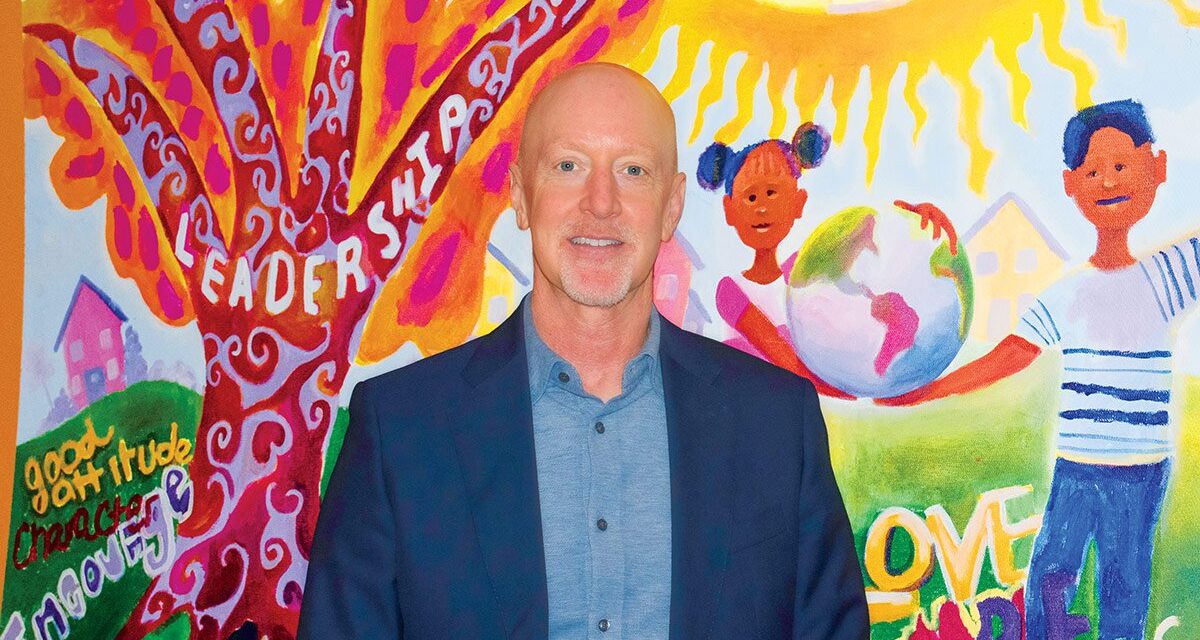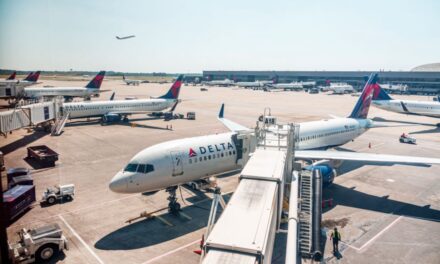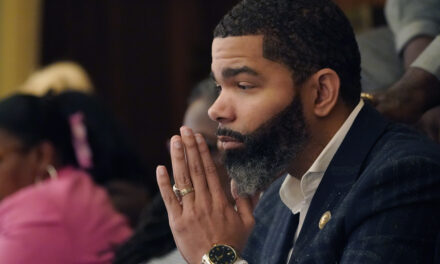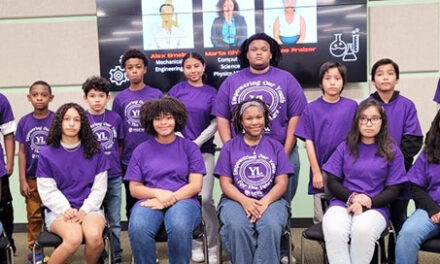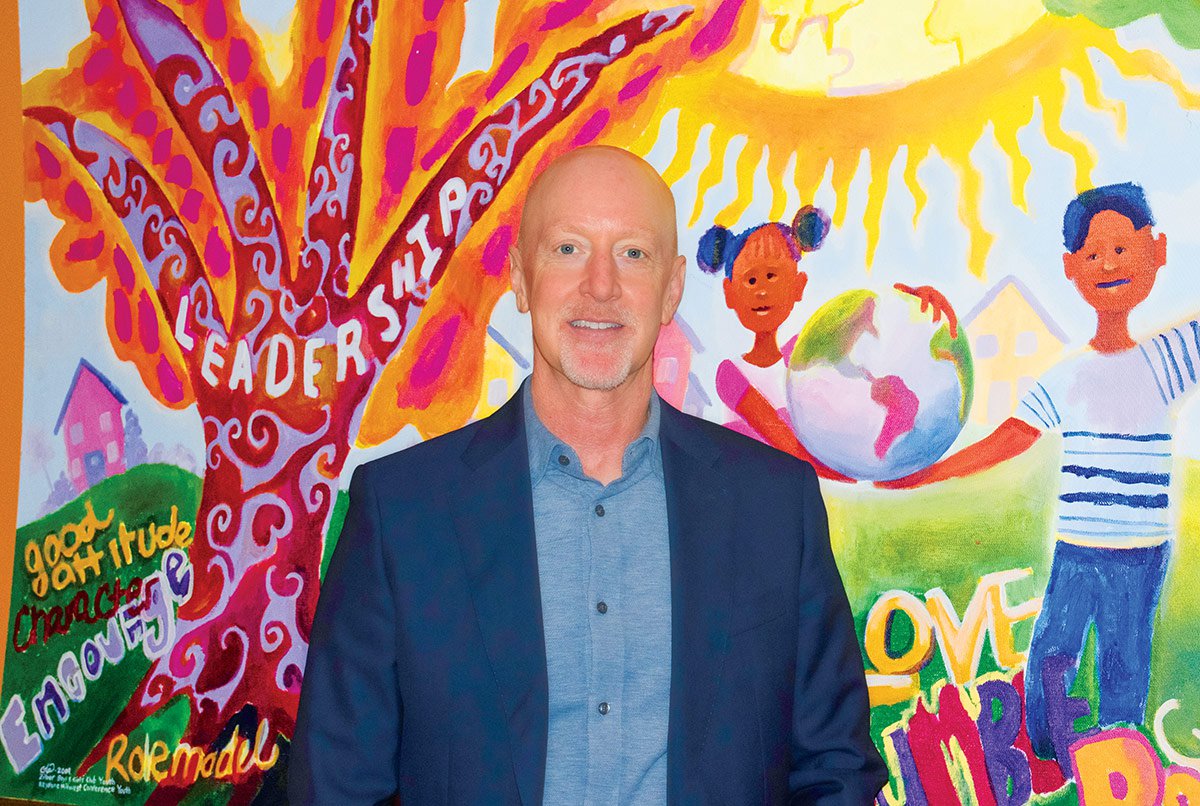
We are living in an era where technology and artificial intelligence are racing faster than human development. Reliant on social media, our youth are often confused about their place in the world. Social and emotional development play a leading role in the ability of youth to succeed in school, careers and life.
Enter the Boys & Girls Clubs of Greater Milwaukee (BGCGM), which since 1887 has prepared young people to lead productive lives with positive self-esteem, school and learning engagement, and volunteering in their communities. BGCGM is among the largest and most prominent of 2,500 Boys & Girls chapters across the country.
With more than 50 locations in the city of Milwaukee, BGCGM provides youth ages 4-18 with after-school and summer programming including academic support, mentorship, athletics, arts training and wholesome meals. Programs include STEM (science, technology, engineering and mathematics), organized sports leagues, college and career programs, health and wellness programs, and leadership and service. As the foundation of the Boys & Girls Clubs of Greater Milwaukee, this curriculum strengthens academic performance, builds character, and encourages quality lifestyles.
How does this successful organization operate? For answers, I turned to Jeff Snell, the former CEO of the Boys & Girls Clubs of Greater Milwaukee in the early 2000s and currently the Interim CEO. We talked in the conference room in the expansive Mardak Building on Sixth Street near Downtown Milwaukee. A model of thoughtfulness through graceful, soft-spoken sincerity, Jeff Snell could be your dad if you could choose your dad.
Tell me a little about your background, where you grew up, your parents and your education.
![]() Stay on top of the news of the day
Stay on top of the news of the day
Subscribe to our free, daily e-newsletter to get Milwaukee’s latest local news, restaurants, music, arts and entertainment and events delivered right to your inbox every weekday, plus a bonus Week in Review email on Saturdays.
I was raised in Appleton, Wis., one of five children. While the five of us were growing up, my parents opened their home to foster care children. Through those years, my family hosted 327 foster children. For instance, I never knew who would show up at the dinner table. These kids generally had no luggage, instead, carried black plastic bags for their belongings. That is when I first encountered children who were nursing self-doubt and lack of hope.
What about you? What was your life like growing up?
I went to Appleton East High School. My parents had broken up, and I lived with my dad. Those were some hard times, but I developed empathy and a sense of humility. A long time later in 1997, when I first walked into the Milwaukee Boys & Girls Club, I saw a 10-year-old boy, head in his arms. He looked up at me sadly, and I thought, “I get you.” Like me in my youth, that boy was full of insecurities and disappointments. That experience motivated me to work at the clubs.
After Appleton East High School, where did you end up going to college?
North Central College, a Christian university in downtown Minneapolis. I worked full time through undergrad but racked up debt. Got my college degree in philosophy and theology. I went to graduate school on the East Coast and earned my master’s degree in social ethics. For a short time, I worked in the U.S. Senate for Wisconsin Senator Bob Kasten. In the early 1990s, I moved back to Wisconsin and got my Ph.D. at Marquette in administration and policy in the education department. I also acquainted myself with Jesuit teachings. Eventually, I started working in higher education and nonprofits and also in youth development, trying to help young people navigate through difficulties and self-doubt.
Take me through more of your career path. From my research, it seems like you’ve been involved in higher education, government, and nonprofit work.
In 1997, I started working at the Boys & Girls Clubs of Greater Milwaukee as head of development. I got to know the preeminent stakeholders in Milwaukee including philanthropists Keith Mardak and Mary Vandenberg. With their help, we began a significant expansion and moved into the Mardak Building here on Sixth Street. The club grew from 8,500 members in 1997 to 25,000 in 2004. We became the largest Boys & Girls Club in the country. In 2001, I was promoted to CEO. In 2004, I left that job.
Why did you leave in 2004? Seems like you were doing great work, having expanded the membership.
John Abele, father of former Milwaukee County Executive Chris Abele, asked me to be the COO of his private billion- dollar Argosy Foundation. I was in that job for three years until the foundation was built up and functioning. After that, I became special advisor to the president of Marquette. I worked in social innovation and social entrepreneurship, and this process generated income that affected overall social impact for Marquette. I was on that job for seven years until 2014. Then, I got a job in social entrepreneur spaces in Santa Fe, N.M., working with artisans globally. In 2019, I moved to Madison where I was a professor at the University of Wisconsin, and I also helped UW build the first series of online undergraduate programs. I had just retired from that job when the Boys & Girls Clubs of Milwaukee asked me to come back to Milwaukee as Interim CEO.
Friends of the ShepherdHelp support Milwaukee’s locally owned free weekly magazine. |
What exactly is the Boys and Girls Clubs of Greater Milwaukee and what services does it provide?
I like to think we provide safety and support for the most critical hours for our kids. During the school year, that means after 3 p.m. and then club activities over the summer including our camps. We also provide meals. We do core programming that helps kids with character development, career aspiration, and academic preparation. Our aim is to produce productive, caring, and responsible citizens. Life preparation, in other words.
Your reach covers a large section of the Milwaukee area, several counties.
Yes, we have five legacy big brick and mortar clubs, and we have a camp, Camp Whitcomb/Mason, in Waukesha County. Many of our kids are from the inner city, and some haven’t even seen the Lake Michigan lakefront. For them, camp is a great experience.
Give me a brief history of the Boys & Girls Clubs. I believe it was started in 1887.
True. In 1887, Annabell Cook Whitcomb came to Milwaukee from the East Coast and transformed two basement rooms at Plymouth Church on Milwaukee’s East Side into a club for boys. I view her as baptized in the social gospel, which was a big deal in the 1870s and 1880s, traveling tent shows with gospel preachers. Her goal was to create a boys club where boys can be busy, giving them something to do to keep them out of trouble. That was the beginning, and now look where we are today.
I read this on your website: “A youth development revolution is spreading, and Boys & Girls Clubs of Greater Milwaukee is proud to be at the forefront. Social and emotional development is a key factor in young people’s ability to succeed in school, careers and life. It is the very foundation of our work.” Can you comment further on this?
Many kids come out of adolescence with insecurities, uncertainty and self-doubt. We are educating youth on how to navigate this journey and embrace this process as part of the human condition. We teach kids how to be in control of their own thoughts and emotions. We try to help them get out of the negative cycle of dependency where they struggle to enter adulthood. They learn about accountability and about character development, being trustworthy and a good friend, and being active in school and in their communities. And also, that they have the power to manage their own lives and be in charge of their future. In other words, social and emotional development.
Do you recruit young people to join your clubs? Or do you recruit their parents?
We engage young people through many avenues, generally trying to cast a wide net to reach as much of the community as possible. That can be through day school connections, community events, and word of mouth. The parent and guardian connection is crucial. On any given day, we are actively helping about 3,500 youth involved in our programs. The more kids spend time with us, the better the outcomes, namely higher GPAs, less truancy.
I’ve spent a fair amount of time in the inner city and gotten to know residents, street leaders and the Black culture. One of the key factors I’ve noticed is the lack of hope among children and families. For a lot of families, there is little planning, as in, what will we do tomorrow, what are the plans for the near future, how do we make a long-term plan. Theirs is a day-to-day existence. Roughly, 80 percent of inner city families have only a mother as the head. And all this fuels a lack of hope. I’ve talked to teen boys who doubt they will live past 19.
If a youth does not have positive emotional and social development, he or she doesn’t see problems or trauma as solvable. And single mother families are arguably the greatest indicator of poverty. The good news is that our Black community residents are active in their churches, which provides hope.
From your website, it says: “Leadership & Service programming has been a primary focus of the Club’s mission.” How do you focus on leadership and service?
I am thinking of a few of our programs. One is the Torch Club, and one is called Keystone. These two clubs are designed for mid to late adolescent youth. The clubs concept puts the youth in charge of local club activities. The clubs have elected leaders. The members learn how to create a vision and collaborate with others. At one time, we even had a functioning credit union run by kids. But there are many different kinds of clubs, from dance to sports to girls clubs.
How is the Boys & Girls Clubs of Greater Milwaukee funded? What is the annual budget?
Our budget is about $37.3 million. In terms of funding support, we receive about 50 percent from government grants and United Way. Thirty-three percent comes from development and fundraising efforts. We also receive income from our endowment, private nonprofit contributions, and membership fees.
From the 2021 annual report, here is the breakdown of ages of your youth members: 23 percent 4-8 years old, 34 percent 9-12, 23 percent 13-15, and 20 percent 16+ years old. As for gender, 47 percent girls and 53 percent boys. And here is the ethnic breakdown: Asian two percent, Black or African American 51 percent, Hispanic or Latino 28 percent, white three percent. Since you are mentoring mostly children of color, what are the challenges you perceive?
In the central city, there are many shared experiences, and many of them have to do with poverty. We try to understand the social dynamics of each neighborhood community, for instance, Latino and Black community members. We hire youth professionals to be savvy about the varying cultures and neighborhood dynamics.
In my observation, I think the Latino community is strong on holding the family together, and most Latinos are traditional Catholics. The family concept in the Black community kind of fell apart after the manufacturing jobs went away in the 1990s, and drugs and underground crime took over the central city economy.
You are exactly right. At BGCGM, we look to the value propositions that are specific to each community, for instance the Catholic family bonding in the Latino community or Baptist influence in the Black community.
How many fulltime employees do you have? How many parttime and volunteers?
178 full time employees. 387 part time, 30 Americorps and roughly 100 volunteers. We have an incredible staff, I believe.
For more information, visit bgcmilwaukee.org.
